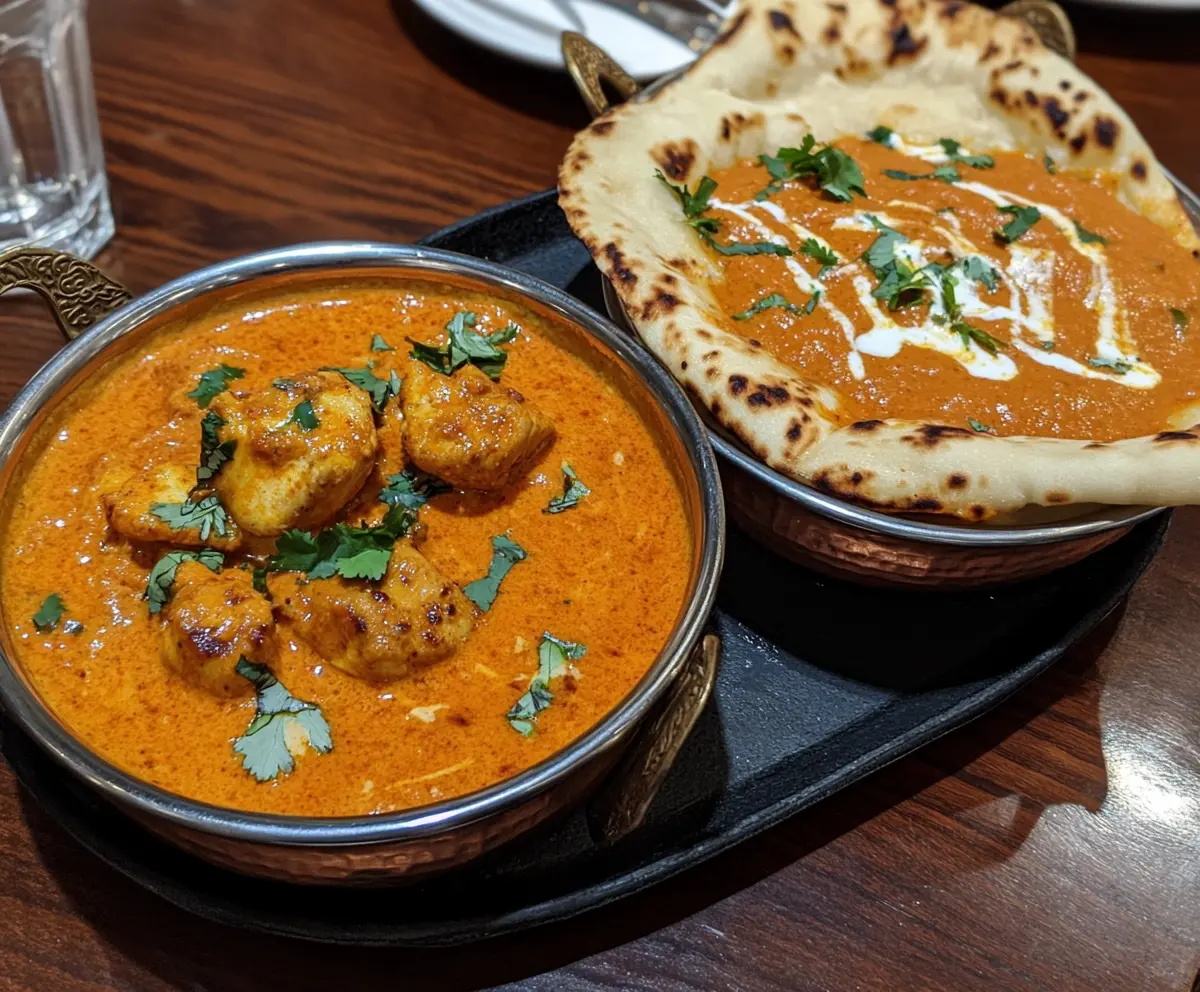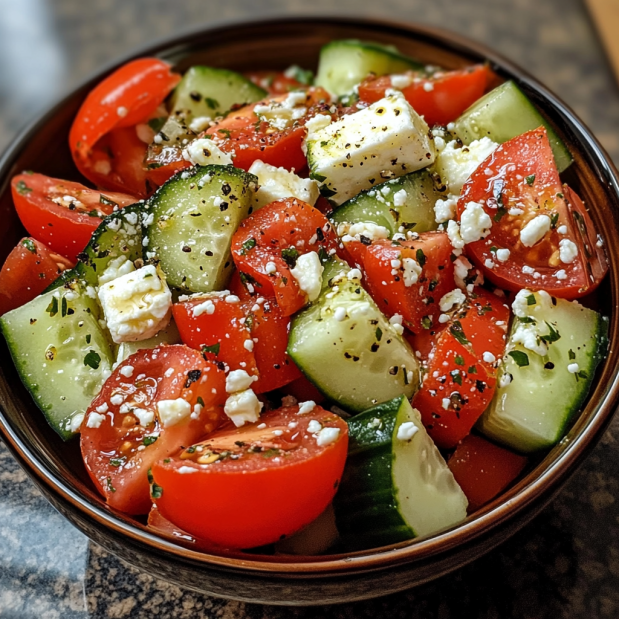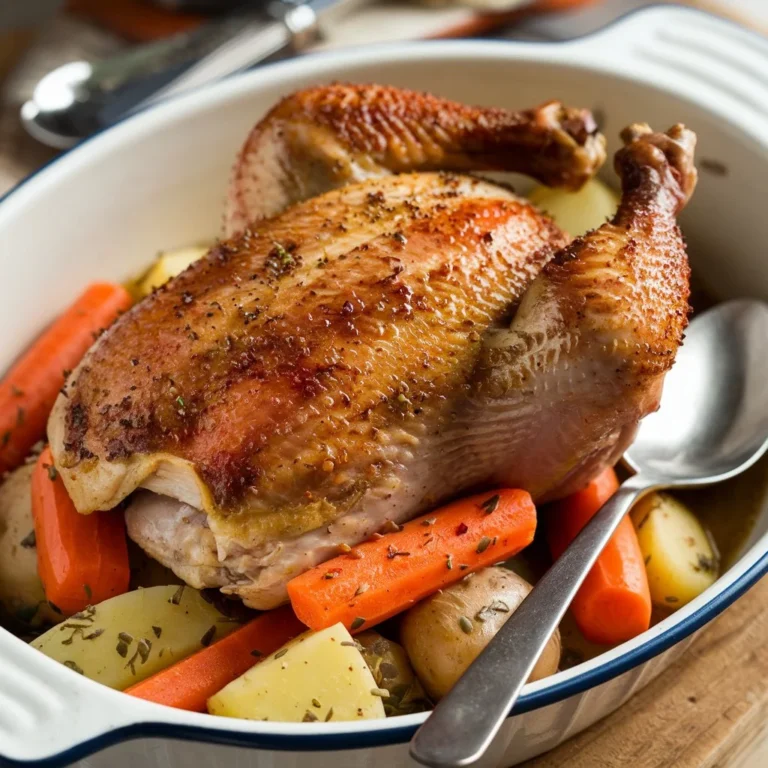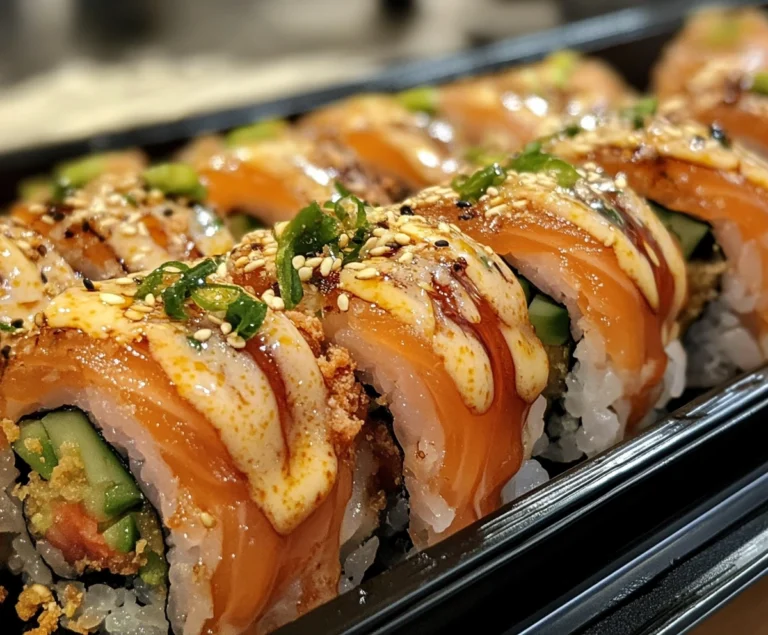What Does Butter Chicken Taste Like?
butter chicken taste like or Murgh Makhani, is not just a dish; it’s a culinary experience that has traveled from the heart of India to become a worldwide favorite. With butter chicken taste like its creamy, flavorful, and mildly spiced sauce, butter chicken taste like has gained fans across continents. But what does butter chicken really taste like? What makes it so universally beloved? In this comprehensive article, we’ll dive deep into the flavors, history, cooking techniques, and cultural significance of butter chicken taste like.
Part 1: The Origins and Evolution of Butter Chicken
The Historical Roots of Butter Chicken
Butter chicken was born in the 1940s in the bustling streets of New Delhi, India. Like many legendary dishes, its creation was somewhat accidental. At the time, the chefs at the famous Moti Mahal restaurant were looking for ways to use up leftover tandoori chicken. They decided to combine the dry chicken pieces with a rich, buttery tomato sauce to prevent the meat from drying out further. Little did they know, this impromptu creation would become an international sensation.
Moti Mahal’s chef, Kundan Lal Gujral, is credited with inventing butter chicken, and since then, the dish has become synonymous with Indian cuisine across the globe. The use of butter and cream in an Indian curry was groundbreaking at the time and introduced a new level of indulgence to Indian dishes. Traditionally known as Murgh Makhani, butter chicken is now a staple in Indian restaurants worldwide.
In many ways, butter chicken exemplifies the adaptability and creativity of Indian cuisine. It represents how a dish can evolve and adapt to different cultures while retaining its traditional essence.
Global Popularity: How Butter Chicken Conquered the World
Although butter chicken was invented in India, it didn’t take long for it to spread to the West. In the 1970s, when Indian cuisine began to gain popularity in the UK, butter chicken quickly became a favorite, alongside its cousin, chicken tikka masala. The dish’s rich yet mild flavor appealed to Western palates, which often preferred less spicy curries.
As butter chicken gained popularity, chefs in different countries began to adapt the recipe to suit local tastes. In some versions, the spice level is reduced; in others, the dish is made more indulgent by increasing the amount of cream. These adaptations, however, still stay true to the dish’s roots.
If you want to explore more about how Indian chicken dishes have influenced Western cuisine, check out this article on Alice Springs chicken, a perfect example of cross-cultural fusion.
Part 2: What Does Butter Chicken Taste Like?
Flavor Profile of Butter Chicken
The first bite of butter chicken is an explosion of flavors. Rich, creamy, and slightly sweet, this dish embodies a perfect balance of spice and smoothness that makes it irresistible to many. The base flavor of butter chicken is a creamy tomato sauce infused with a variety of spices, yet it never becomes overwhelmingly spicy.
Butter chicken typically has a mild heat that even non-spice lovers can enjoy. This is due to the inclusion of cream and butter, which temper the spices and create a luscious, smooth sauce. The result is a sauce that feels indulgent but is also delicate, allowing each spice to shine without overwhelming the palate.
Key Flavor Elements:
- Sweetness: The tomatoes in the sauce add a natural sweetness, which is heightened by the use of cream.
- Savory Depth: Ingredients like garam masala, coriander, and cumin contribute a deep, earthy flavor that contrasts with the sweetness of the tomatoes.
- Mild Heat: The use of chili powder adds a gentle warmth, but it’s not overpowering due to the cream and butter.
- Umami: Butter chicken has a rich, umami-filled taste that keeps you coming back for more. The butter and cream add richness, while the spices and marinated chicken provide depth and complexity.
If you want a deeper understanding of how different flavors play together in chicken-based dishes, this article on crispy baked chicken cutlets provides great insights into balancing flavors in poultry.
The Texture of Butter Chicken
In addition to its incredible flavor, butter chicken is also beloved for its luxurious texture. The sauce is velvety and smooth, coating every piece of chicken in a rich layer of flavor. The butter and cream contribute to this creaminess, making each bite feel indulgent.
The chicken itself is tender and juicy, thanks to the marination process. By soaking the chicken in a yogurt and spice mixture, it becomes incredibly flavorful and remains moist during cooking. When you bite into the chicken, it practically melts in your mouth, complementing the creamy sauce perfectly.
How to Make Authentic Butter Chicken at Home: A Step-by-Step Guide
One of the best things about butter chicken is that it can be made at home with relative ease, and the result is every bit as indulgent as what you’d get at an Indian restaurant. While the dish seems intricate, the process is straightforward if you have the right ingredients and a bit of patience. This section will provide a detailed, step-by-step guide to making authentic butter chicken in your kitchen, focusing on how to achieve the rich, creamy sauce and tender marinated chicken that defines the dish.
Ingredients You’ll Need:
To make a flavorful and authentic butter chicken at home, gather the following ingredients:
- Chicken (preferably boneless, skinless chicken thighs): Thighs are ideal as they are more tender and juicy, but you can also use chicken breasts.
- Yogurt (for marination): Acts as a tenderizer, making the chicken juicy and full of flavor.
- Garlic and Ginger (fresh, for marination and sauce): These add a distinct aromatic base essential to Indian cooking.
- Spices:
- Garam masala: A blend of warm spices that adds depth.
- Cumin, coriander, turmeric, chili powder: For added flavor and color.
- Kasoori methi (dried fenugreek leaves): A traditional Indian herb that gives a subtle bitterness and earthy flavor.
- Butter (unsalted): This forms the base of the sauce, giving it its rich, indulgent texture.
- Heavy cream: Adds a velvety smoothness to the sauce.
- Tomatoes (fresh or canned, crushed): These form the bulk of the sauce, providing the characteristic tang and sweetness.
- Cilantro: Used for garnish, adding a fresh pop of color and flavor.
- Salt and sugar: These help balance the flavors of the dish.
Marinating the Chicken
The first step to making delicious butter chicken is properly marinating the chicken. This step is crucial as it infuses the chicken with deep flavors and helps tenderize the meat, resulting in juicy, flavorful bites once cooked.
- Cut the Chicken: Start by cutting the chicken into bite-sized pieces. This ensures that the chicken cooks evenly and absorbs more of the marinade.
- Prepare the Marinade: In a bowl, mix yogurt, freshly grated garlic, and ginger with the key spices: garam masala, turmeric, cumin, coriander, and chili powder. The yogurt acts as both a tenderizer and a flavor carrier, while the spices bring in warmth and depth. Garlic and ginger add a pungent, aromatic quality that is essential to Indian cooking.
- Marinate the Chicken: Add the chicken pieces to the marinade and make sure they are fully coated. For the best results, let the chicken marinate for at least 30 minutes. However, if you want maximum flavor, it’s recommended to marinate the chicken overnight in the refrigerator. The longer marination allows the spices and yogurt to penetrate the chicken, making it tender and flavorful.
- Optional Grilling: Some recipes suggest grilling or broiling the marinated chicken to give it a slight char before adding it to the sauce. This step is optional but adds a smoky flavor reminiscent of traditional tandoor-cooked butter chicken.
Preparing the Sauce:
- In a large pan, melt the butter and add chopped garlic and ginger. Cook until fragrant.
- Add crushed tomatoes and spices (cumin, garam masala, and coriander). Let the sauce simmer until it thickens and the tomatoes darken in color.
- Blend the sauce until smooth and creamy. You can use a blender or an immersion blender for this step.
- Stir in the heavy cream, sugar, and kasoori methi. Let the sauce simmer on low heat to allow all the flavors to meld together.
Cooking the Chicken:
- In a separate pan, grill or sear the marinated chicken until browned on all sides.
- Add the cooked chicken to the sauce and let it simmer until the chicken is fully cooked and has absorbed the flavors of the sauce.
Serving Suggestions:
Butter chicken is best served with soft naan bread or steamed basmati rice. The bread or rice acts as a perfect vehicle for the rich, creamy sauce.
For those interested in more ideas on how to cook flavorful chicken, check out this ultimate guide to healthy chicken breast recipes.
Part 4: Comparison with Other Indian Curries (Approx. 700 Words)
Butter Chicken vs. Chicken Tikka Masala
Many people confuse butter chicken with chicken tikka masala, and it’s easy to see why. Both dishes are tomato-based and use chicken, but they have distinct differences in flavor and preparation.
- Chicken Tikka Masala is generally spicier and has a more tangy flavor due to the use of more tomatoes and spices. The sauce is often less creamy and thicker, with more emphasis on the spices.
- Butter Chicken, on the other hand, is milder and creamier, with a subtle sweetness from the tomatoes and cream. The butter and cream help to mellow out the spices, making the dish less fiery than chicken tikka masala.
Butter Chicken vs. Korma
Korma is another dish that is similar to butter chicken in terms of creaminess, but the flavor profile is quite different.
- Korma is typically made with yogurt, coconut milk, or cream and has a much milder, nuttier flavor. The spices used in korma are also different, with more emphasis on cardamom and cinnamon, which give it a slightly sweet, aromatic flavor.
- Butter Chicken, by contrast, has a more pronounced tomato base and uses spices like garam masala, which gives it a deeper, earthier flavor.
For more on the differences between these dishes, you might find this article on chicken fajita slow-cooker recipes insightful, especially when considering how different techniques change the flavor of chicken dishes.
Part 5: Butter Chicken in Modern Cuisine (Approx. 500 Words)
Butter Chicken in Indian Restaurants
Walk into any Indian restaurant, and you’ll likely see butter chicken as a featured item on the menu. It has become a standard offering because it appeals to a wide range of customers. The dish’s mild flavor and creamy texture make it ideal for those new to Indian food, while its rich taste satisfies even seasoned fans of the cuisine.
The popularity of butter chicken has inspired many modern chefs to put their own twist on the dish. You’ll find variations that include everything from vegan butter chicken made with tofu to spicier versions that cater to more adventurous palates.
Butter Chicken in Western Cuisine
Butter chicken’s influence extends beyond traditional Indian restaurants. In Western countries, it has been incorporated into a variety of dishes, from butter chicken pizza to butter chicken pasta. These modern adaptations keep the essence of butter chicken’s flavor while introducing new and exciting ways to enjoy it.
If you’re curious about how Indian flavors blend with Western dishes, you might enjoy reading about spinach artichoke dip in this ultimate guide to Tex-Mex and fusion recipes.
Part 6: Frequently Asked Questions (FAQs) (Approx. 200 Words)
What Makes Butter Chicken Special?
Butter chicken stands out due to its rich, creamy sauce and balanced blend of spices. The dish is mild, yet flavorful, offering a perfect introduction to Indian cuisine for newcomers while still satisfying long-time fans.
Is Butter Chicken Spicy?
No, butter chicken is known for its mild flavor. While it contains spices, the use of cream and butter tones down the heat, making it suitable for people who are sensitive to spicy food.
Can Butter Chicken Be Made Healthier?
Yes, you can make a lighter version of butter chicken by substituting Greek yogurt for heavy cream or using low-fat milk. Additionally, grilling the chicken instead of frying it can reduce the calorie content.
For more ideas on healthy alternatives to rich dishes, check out this guide to nutritious chicken recipes.
How Do You Serve Butter Chicken?
Butter chicken is traditionally served with naan bread or steamed basmati rice, which help soak up the creamy sauce. For a more indulgent meal, garlic butter rice is another popular accompaniment.
Part 7: Conclusion
Butter chicken is much more than just a meal; it’s a representation of the rich and diverse culinary heritage of India. Its mild yet flavorful sauce, tender marinated chicken, and creamy texture have made it a favorite worldwide. Whether you’re new to Indian cuisine or a seasoned lover of curries, butter chicken is a dish that you’re sure to enjoy.
From its origins in New Delhi to its current status as a global comfort food, butter chicken continues to evolve and inspire. With countless variations and adaptations, it’s a dish that can be enjoyed by everyone, regardless of their spice tolerance or dietary preferences.
Next time you’re craving something rich, flavorful, and comforting, butter chicken is a must-try. And if you’re feeling adventurous, why not try making it at home? With the simple recipe provided above, you can enjoy this classic dish in the comfort of your own kitchen.
For more delicious chicken recipes and inspiration, check out Aurelia Recipes, where you’ll find a wide range of dishes perfect for every occasion.







